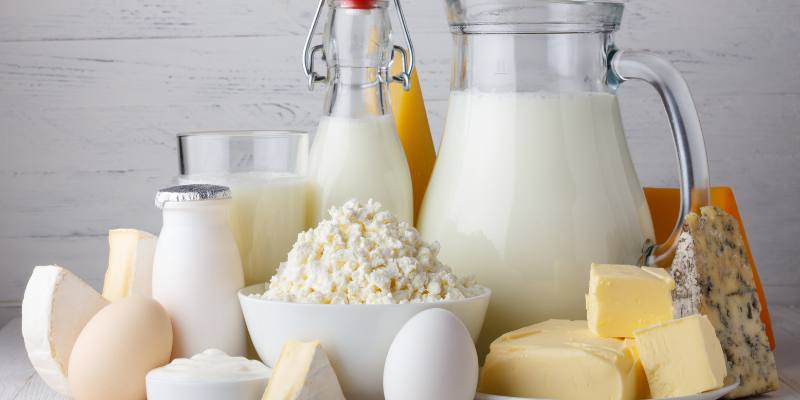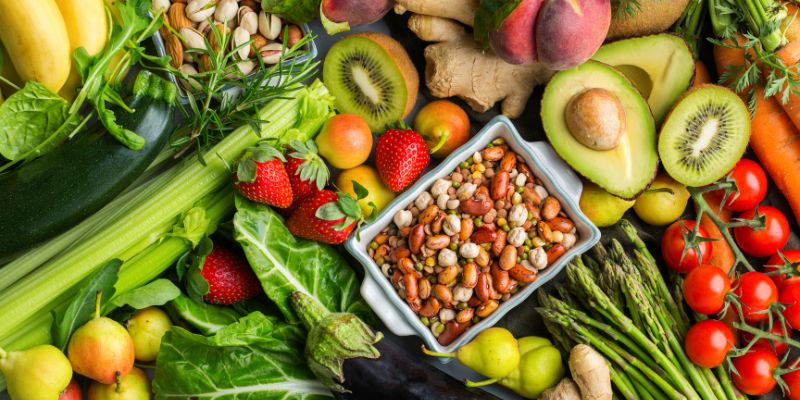Protein plays a crucial role in muscle repair, hormone production, immune function, and overall well-being. Yet, when following a vegetarian lifestyle, many people worry about getting enough protein without relying on meat or fish. The good news? With thoughtful planning and awareness, a vegetarian diet can deliver all the protein your body needs. In this complete guide, we'll explore the most effective ways to add protein to your vegetarian diet—whether you're new to the lifestyle or simply looking to optimize your meals.
What Is a Vegetarian Diet?
A vegetarian diet excludes meat, poultry, and fish but includes plant-based foods such as vegetables, fruits, grains, legumes, nuts, and seeds. Many vegetarians also consume dairy products and eggs, depending on the specific type of vegetarianism they follow. Lacto-vegetarians include dairy but avoid eggs, while ovo-vegetarians consume eggs but not dairy.
Lacto-ovo vegetarians eat both. The diet is known for supporting heart health, weight management, and a lower risk of chronic disease; however, proper protein intake must be a top priority for maintaining balance and energy.
How to Add More Protein to Your Vegetarian Diet?
Adding protein to a vegetarian diet isn't difficult, but it does require a conscious effort. By understanding the protein content of plant-based ingredients and combining them strategically, you can meet your daily protein requirements without relying on meat or fish.
Here are some helpful guidelines:
- Start your day with high-protein breakfasts, such as Greek yogurt with nuts and seeds, or a tofu scramble with whole-grain toast.
- Always include a protein source in every major meal—this could be legumes, grains, eggs, or dairy.
- Use hummus, guacamole with seeds, or black bean dips as snacks or sides to your main dish.
- Mix and match food groups to ensure a complete amino acid profile, such as rice and beans, or whole grain bread with peanut butter.
- Rotate your protein sources weekly to keep meals interesting and nutrient-rich.
Top Tips to Boost Protein on a Vegetarian Diet:
These practical tips will help you ensure every meal delivers quality protein to fuel your day:
- Prioritize Legumes in Every Meal: Beans, lentils, peas, and chickpeas are affordable, filling, and packed with protein and fiber. Use them in soups, salads, wraps, and grain bowls.
- Choose Protein-Rich Whole Grains: Quinoa, farro, teff, and amaranth offer more protein than traditional rice or wheat. They are perfect bases for both savory and sweet dishes, keeping you full for longer.
- Include Soy-Based Foods Regularly: Tofu, tempeh, and edamame are complete protein sources that are highly versatile. Bake, grill, or stir-fry them to add flavor and nutrients to any dish.
- Use Dairy and Eggs Strategically (if allowed): Greek yogurt, cottage cheese, and eggs are rich in protein and can be easily incorporated into breakfast or snacks. Try boiled eggs, yogurt parfaits, or cheese-based dips for a healthy snack option.

- Incorporate Nuts and Nut Butters: Almonds, peanuts, cashews, and walnuts, as well as nut butters, provide a rich source of protein, healthy fats, and energy. Add to oatmeal, smoothies, or toast for a delicious treat.
- Go Big on Seeds and Seed Butters: Chia, hemp, flax, sunflower, and pumpkin seeds are small but mighty. Add them to cereals, smoothies, salads, or homemade energy bars.
- Make Smart Snack Choices: Choose snacks like roasted chickpeas, trail mix, protein bars (with plant-based ingredients), or veggie sticks with hummus to boost intake throughout the day.
- Layer Protein in Meals: Combine multiple sources, such as beans, grains, and seeds, or eggs, cheese, and vegetables, to create synergistic meals that are nutritionally complete.
- Plan Meals: Meal prepping helps ensure you include protein in every dish and prevents last-minute unhealthy choices that may lack adequate nutrients.

- Track Your Protein Intake Occasionally: Apps and food journals can help you gauge how much protein you're getting and highlight any areas for improvement.
Common Mistakes to Avoid When Adding Protein:
Even with the best intentions, certain habits can block your progress. Watch out for these common pitfalls:
- Relying Too Heavily on Processed Meat Substitutes: While convenient, some plant-based meat alternatives are high in sodium and low in real nutrients. Use them sparingly and focus on whole food sources.
- Neglecting Variety: Eating the same protein source daily can limit nutrient diversity. Rotate between legumes, grains, seeds, and soy to meet all amino acid needs.
- Skipping Protein at Breakfast: Many vegetarians miss out on protein in the morning. Start with Greek yogurt, nut butter toast, or a protein smoothie.
- Not Eating Enough Calories: Inadequate calorie intake can lead to muscle loss and fatigue. Protein needs are higher when you're under-fueling, as the body may break down muscle tissue for energy. This can impair recovery, weaken the immune system, reduce performance, slow metabolism, and hinder progress in strength or endurance goals. Fueling correctly supports overall health and function.
- Ignoring Complementary Proteins: Some plant-based proteins lack one or more essential amino acids. Pairing foods like rice and beans helps create complete proteins.
- Forgetting to Read Labels: Some protein bars and packaged snacks may appear healthy. However, they often contain little actual protein, excessive sugar, unhealthy fats, artificial sweeteners, excess sodium, refined carbohydrates, and preservatives, which reduce their overall nutritional value. Always check ingredients and nutrition facts to make informed, healthier choices and avoid misleading marketing claims.
- Avoiding Fats Entirely: Many protein-rich vegetarian foods also contain healthy fats (like nuts and seeds). Don't fear fats—they're essential for absorption, hormone health, brain function, energy production, cell structure, vitamin transport, and reducing inflammation. Incorporating a variety of plant-based fats ensures a balanced diet, supports metabolic processes, and contributes to long-term health and overall well-being.
Conclusion
A vegetarian diet offers incredible health and ethical benefits, but protein intake should never be overlooked. With thoughtful food choices and daily meal planning, you can enjoy all the benefits of a plant-forward lifestyle without compromising on your nutritional needs.
From legumes and grains to soy products and dairy (if allowed), protein is plentiful in the vegetarian world—you need to know where to look. Start by trying a few of these tips today and observe how your body feels with a more balanced, energized diet. Eating plant-based has never been more powerful, satisfying, and protein-packed!












